Are There Sharks in the Mediterranean Sea?
The Mediterranean Sea is known for being a calm and safe body of water, but sharks can still be found in the region. While the number of shark species in the Mediterranean is relatively low compared to other oceans, there are still several species that inhabit the waters. Some of the commonly found shark species in the Mediterranean include the shortfin mako, blue shark, and thresher shark. The presence of sharks in the Mediterranean may be a result of overfishing and a decline in their food sources. Efforts are being made to conserve and protect the remaining shark populations in the Mediterranean Sea.
Types of Sharks in the Mediterranean
The Mediterranean Sea is home to a variety of shark species. Some of the most commonly found sharks in the region include the Great White Shark, Blue Shark, Shortfin Mako Shark, Blacktip Shark, Hammerhead Shark, Bull Shark, Sand Tiger Shark, and Catshark. Each of these species has unique characteristics and behaviors, but they are generally not considered a threat to humans.
Great White Shark
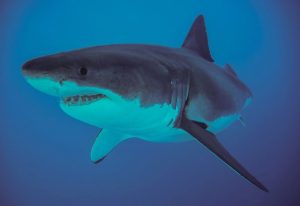
The Great White Shark (Carcharodon carcharias), a formidable predator in the marine world, can reach an impressive length of up to 6 meters. While they are more commonly associated with other oceans, the Mediterranean has had its share of sightings of this species, indicating their wide-ranging habitat.
These sharks are renowned for their robust jaws and razor-sharp teeth, which they effectively use to prey on a diverse diet including fish, seals, sea turtles, and sometimes seabirds. Their hunting strategy is both powerful and efficient, often striking with great speed and force.Apart from their predatory behavior, Great White Sharks are also known for their migratory patterns. They undertake long migrations to find suitable feeding grounds, which is one of the reasons why they occasionally appear in the Mediterranean. This species plays a critical role in maintaining the balance of marine ecosystems by regulating the populations of their prey.Interestingly, Great White Sharks are also a focus of marine conservation efforts due to their declining numbers in some regions. They are often misunderstood due to their portrayal in popular media, but these creatures are crucial for a healthy ocean environment. Efforts are being made to understand their behavior and habitat requirements better, to aid in their conservation.
Blue Shark
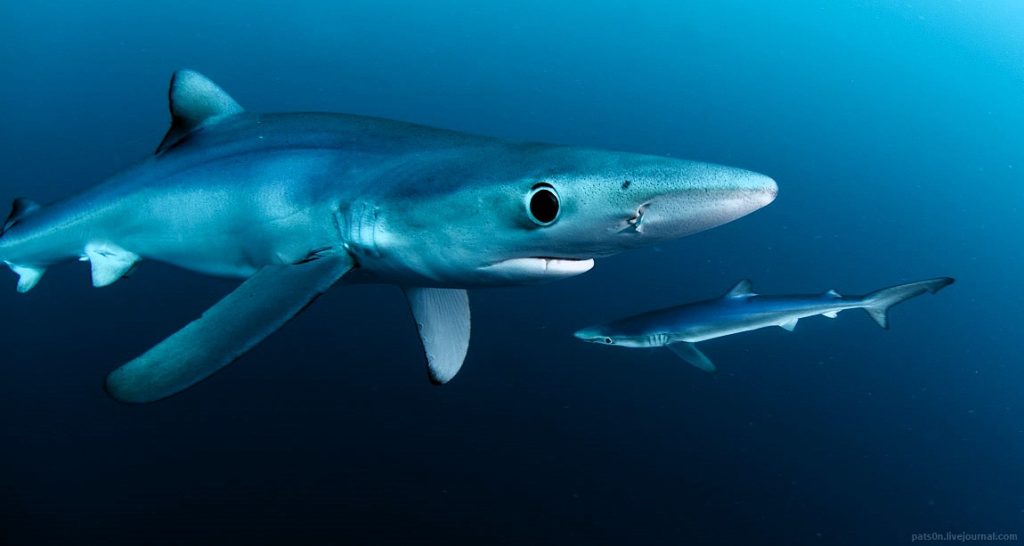
The Blue Shark (Prionace glauca), a prevalent species in the Mediterranean’s marine ecosystem, is distinguished by its slender physique and striking blue-gray hue. These sharks have a diet primarily consisting of small fish and squid, playing a significant role in the ocean’s food chain.
Although they are predators, Blue Sharks are generally not considered a threat to humans. Their behavior tends to be more docile compared to larger, more aggressive shark species. These sharks often travel in groups and are known for their long migratory patterns, covering vast distances across different oceans.
In terms of conservation, the Blue Shark faces challenges due to fishing practices. They are often caught as bycatch in fishing nets and longlines. This has raised concerns among conservationists, as it could impact the balance of the marine ecosystem. Efforts are being made to implement sustainable fishing practices and to monitor the population of Blue Sharks to ensure their survival and well-being in the Mediterranean and beyond.
Shortfin Mako Shark
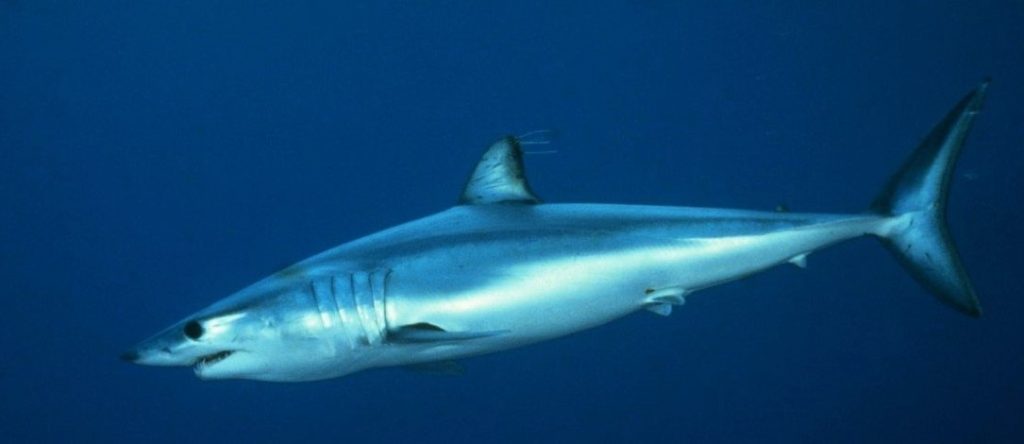
The Shortfin Mako Shark (Isurus oxyrinchus), recognized for its exceptional speed, is a notable presence in the Mediterranean Sea. This species is characterized by its elongated, pointed snout and robust jaws, features that contribute to its efficiency as a predator.
Their diet mainly consists of fish and squid, indicating their role as apex predators in their ecosystem. The Shortfin Mako Shark’s agility and speed make it an adept hunter, capable of quick bursts to catch its prey.
Apart from their ecological role, these sharks have also gained popularity in recreational fishing. They are often sought after by sport fishermen for their challenging nature and the thrill of the catch. However, this has led to concerns over their conservation status. As a result, there are growing calls for responsible fishing practices and measures to protect this species, ensuring its continued presence in the Mediterranean and maintaining the ecological balance of the region.
Blacktip Shark
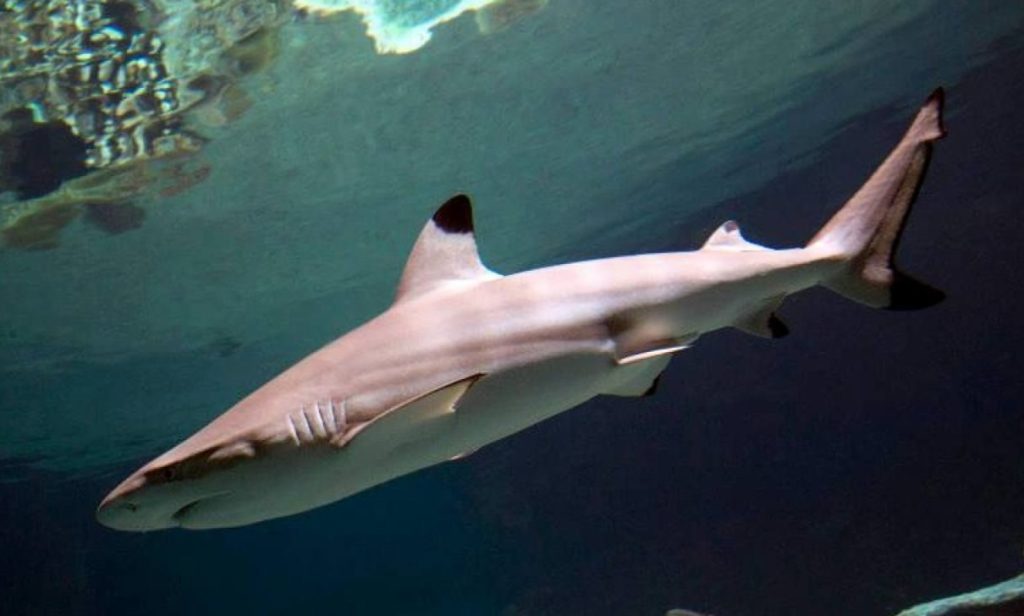
The Blacktip Shark (Carcharhinus limbatus), a smaller species within the shark family, is frequently encountered in the Mediterranean Sea. This species is easily identifiable by its distinct black-tipped fins and slender body, features that contribute to its streamlined appearance.
Blacktip Sharks primarily subsist on a diet of small fish, playing a crucial role in the marine food web by helping to maintain fish population balances. Their feeding habits underscore their importance in the ecological dynamics of the Mediterranean’s marine ecosystem.
Despite being predators, Blacktip Sharks are generally not perceived as a threat to humans. Their behavior tends to be more reserved, especially in interactions with people. This characteristic, along with their smaller size, differentiates them from larger, more aggressive shark species.
The presence of the Blacktip Shark in the Mediterranean also highlights the diversity of shark species in this region. Their survival and well-being are essential for the health of the marine ecosystem, and they serve as indicators of the environmental state of these waters.
Hammerhead Shark
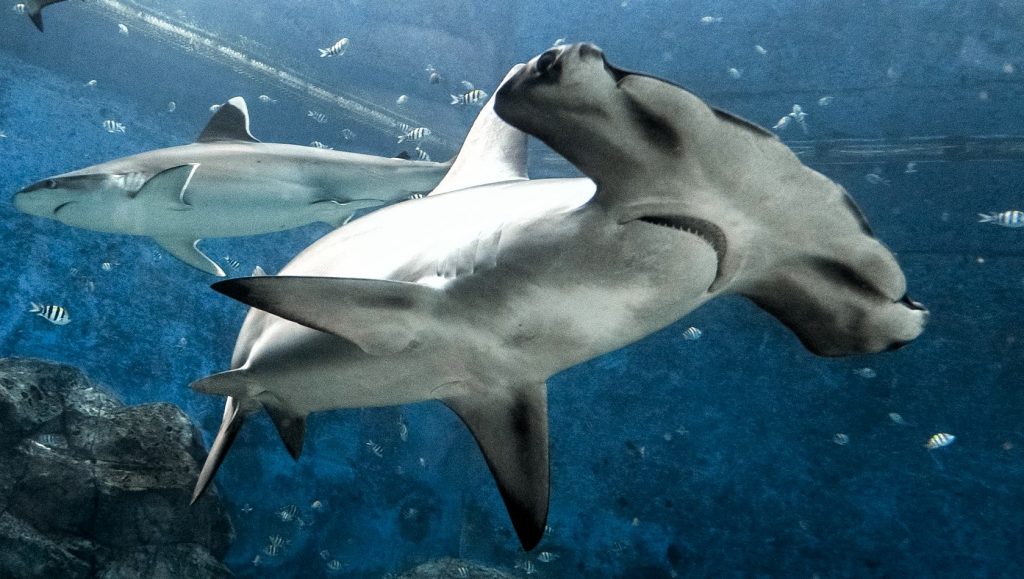
The Hammerhead Shark (Sphyrna spp.), with its unmistakable hammer-shaped head, is an occasional visitor in the Mediterranean Sea. This distinctive feature, known as the cephalofoil, sets it apart from other shark species and is not just a peculiar physical trait but also an evolutionary adaptation.
The wide-set eyes and specialized sensory organs on the cephalofoil allow Hammerhead Sharks to have enhanced sensory capabilities. This adaptation is particularly useful for detecting prey hidden in the sand, such as rays and small fish. Their diet primarily includes fish and squid, indicating their role as skilled predators in their aquatic environment.
Hammerhead Sharks use their unique head shape to pin down stingrays, one of their favorite meals, and to sweep the ocean floor for other potential food sources. This hunting strategy demonstrates their specialized adaptation to their marine habitat.
Though found in the Mediterranean, Hammerhead Sharks are more commonly associated with warmer waters. Their presence in the Mediterranean is a subject of interest for marine biologists, as it provides insights into the migratory patterns and habitat preferences of these intriguing sharks. The Hammerhead Shark is not only a fascinating subject for scientific study but also an important component of the marine ecosystem, contributing to its diversity and balance.
Bull Shark
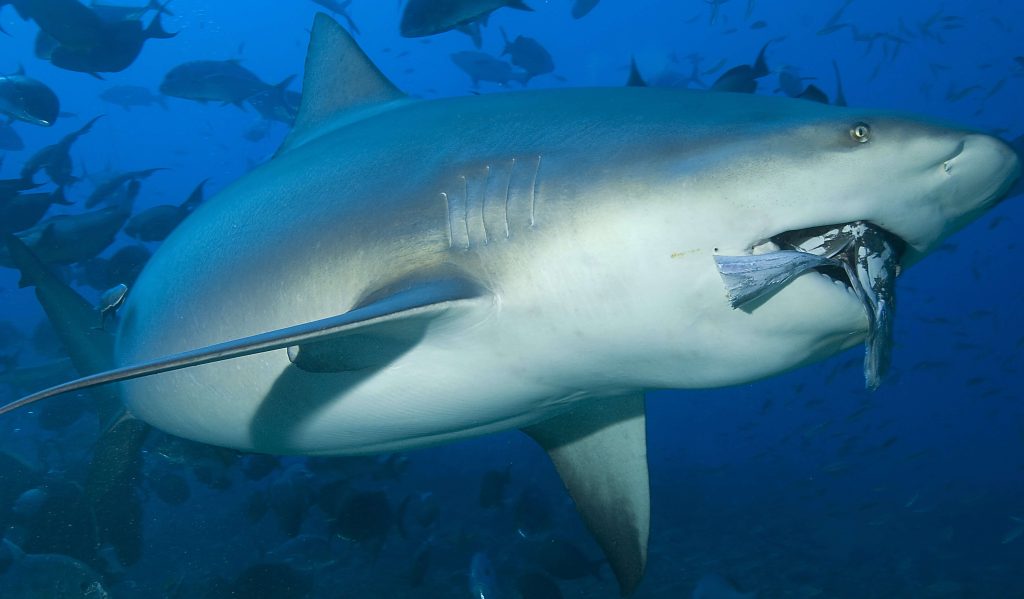
The Bull Shark (Carcharhinus leucas), known for its robust build and aggressive nature, is a species that occasionally makes its way into the Mediterranean Sea. One of the most distinctive traits of the Bull Shark is its remarkable adaptability to both saltwater and freshwater environments, a rare ability among shark species.
Equipped with powerful jaws, Bull Sharks are formidable predators. They primarily feed on fish, but their diet can be quite varied, reflecting their opportunistic feeding behavior. This adaptability in diet is one of the factors that contribute to their success as a species in diverse aquatic environments.
Sand Tiger Shark
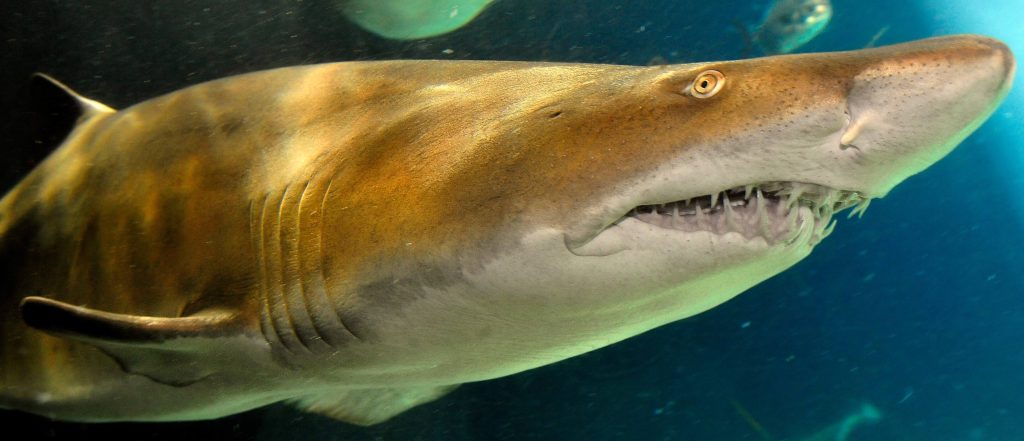
The Sand Tiger Shark (Carcharias taurus), a species often seen in the Mediterranean Sea, is known for its large size and relatively slow movement. These sharks have a distinctive appearance, with sharp, protruding teeth that are visible even when their mouths are closed, giving them a somewhat fearsome appearance.
Despite their intimidating look, Sand Tiger Sharks are typically not aggressive towards humans. They are known for their docile nature, especially when compared to more aggressive shark species. These sharks often swim near the surface of the water, a behavior that makes them a common sight for divers and swimmers.
Catshark
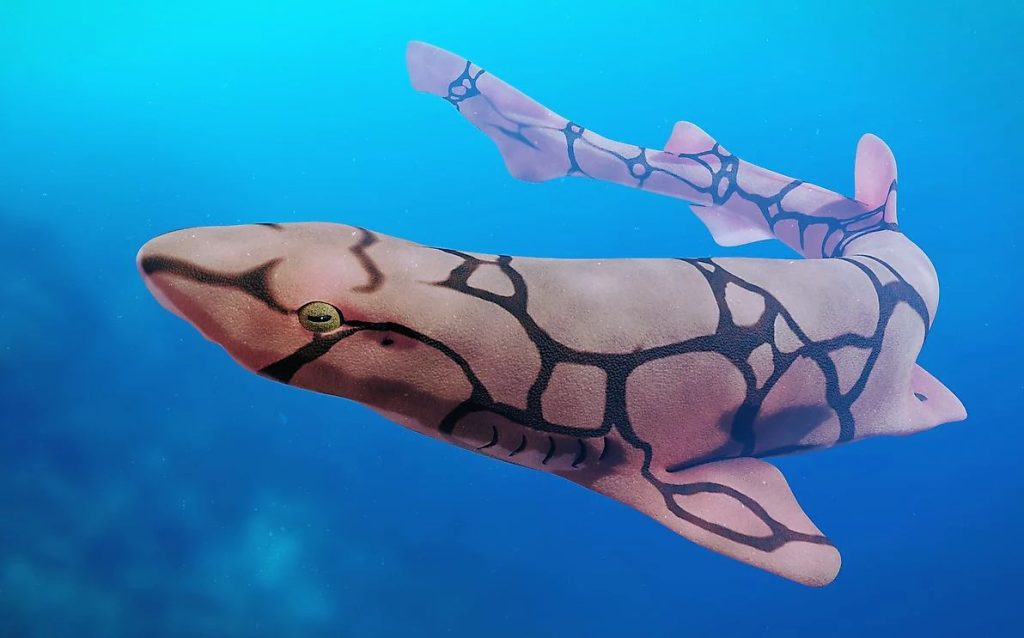
The Catshark (Scyliorhinus spp.) is a small and common shark species in the Mediterranean Sea, notable for its distinctive cat-like eyes. These sharks often seek refuge in rocky crevices and are known for their shy nature. Their diet mainly consists of small fish and crustaceans, reflecting their role as predators in the marine ecosystem. Despite their modest size, Catsharks contribute to the rich biodiversity of the Mediterranean’s underwater world.
Geographical Distribution
Sharks can be found in the Mediterranean Sea, but their distribution is not uniform throughout the region. Different countries along the Mediterranean coast have reported sightings of various shark species. Some of the commonly sighted sharks include the blue shark, shortfin mako, sandbar shark, thresher shark, and hammerhead shark. The Strait of Gibraltar, Ionian Sea, Adriatic Sea, and Black Sea are important habitats for several shark species in the Mediterranean.
Impact on Ecosystem
The presence of sharks in the Mediterranean Sea plays a crucial role in maintaining a healthy ecosystem. As apex predators, sharks help regulate the populations of their prey, which in turn affects the entire food chain. The loss of large predatory sharks from the Mediterranean Sea has had a significant impact on the ecosystem. Studies have shown that the removal of sharks from the marine food web can induce changes at the ecosystem level, disrupting the balance and affecting the populations of other marine life.
Frequently Asked Questions
What types of sharks can be found in the Mediterranean Sea?
There are over 50 species of sharks that can be found in the Mediterranean Sea, including the blue shark, shortfin mako shark, thresher shark, and hammerhead shark.
Are there any dangerous sharks in the Mediterranean Sea?
While there are many species of sharks in the Mediterranean Sea, there are very few that are considered to be dangerous to humans. The most commonly seen shark species in the Mediterranean Sea are not known to be aggressive towards humans, and shark attacks in the region are extremely rare.
How common are sharks in the Mediterranean Sea?
While sharks are present in the Mediterranean Sea, they are not as common as they are in other parts of the world. The population of sharks in the Mediterranean Sea has declined significantly over the past few decades, due to overfishing and habitat destruction.
Is it safe to swim in the Mediterranean Sea with sharks?
While it is generally safe to swim in the Mediterranean Sea, it is important to be aware of the potential presence of sharks. Swimmers should avoid areas where sharks are known to congregate, such as near fishing boats or areas with abundant fish populations.
Have there been any shark attacks in the Mediterranean Sea?
Shark attacks in the Mediterranean Sea are extremely rare. There have been only a few documented cases of shark attacks in the region over the past few decades. However, it is still important for swimmers and beachgoers to be aware of the potential presence of sharks and to take precautions when swimming in the sea.
Why are there not many sharks in the Mediterranean Sea?
The population of sharks in the Mediterranean Sea has declined significantly over the past few decades, due to overfishing and habitat destruction. Many species of sharks are also slow to reproduce, which makes it difficult for their populations to recover once they have been depleted.



